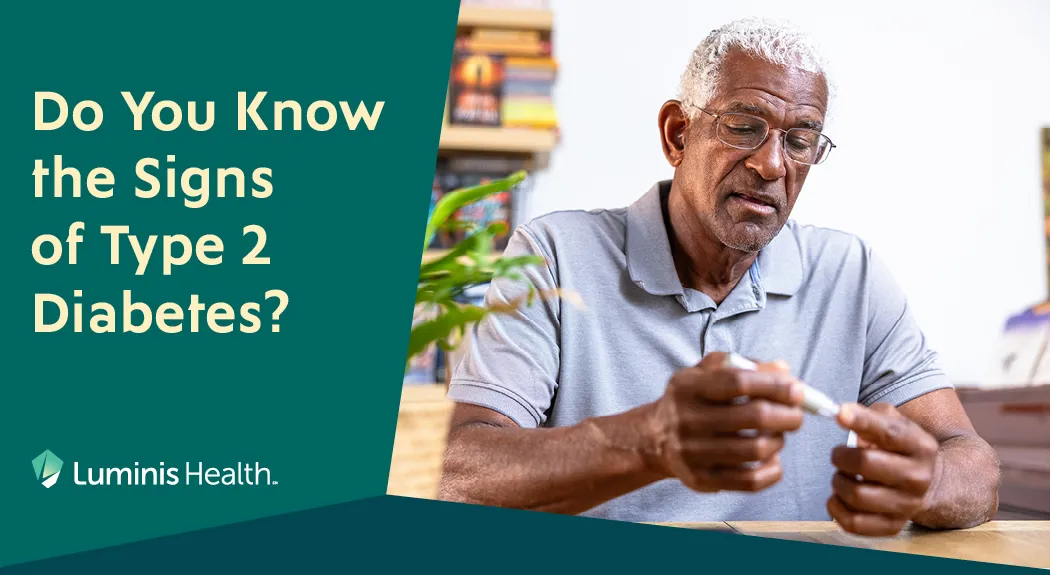November is Diabetes Awareness Month, highlighting a crucial health issue that affects more than 38 million Americans. According to the U.S. Centers for Disease Control and Prevention (CDC), 90 to 95% of those with diabetes have type 2 diabetes, a chronic metabolic condition where the body doesn’t use insulin effectively, leading to elevated blood sugar levels. Each year, 1.9 million new cases are diagnosed, yet more than 8 million Americans remain undiagnosed. If current trends persist, one in every three people born in the year 2000 will develop type 2 diabetes in their lifetime.
In Prince George’s County, adult diabetes diagnoses exceed the state average, with higher rates of diabetes-related deaths and hospitalizations further underscoring the seriousness of this issue locally.
Type 2 diabetes symptoms often develop gradually, causing some people to misattribute them to other factors or remain unaware of the signs. This lack of awareness can delay diagnosis and the opportunity to learn to manage the condition effectively.
Symptoms of type 2 diabetes
Left untreated, type 2 diabetes can lead to several complications, including cardiovascular disease, kidney disease, loss of vision, neuropathy, reduced circulation, loss of limbs, and more. That’s why you should see a physician as quickly as possible if you see any of the signs of type 2 diabetes. Here are some of the critical signs of type 2 diabetes:
- Frequent urination. Type 2 diabetes can increase your need to urinate, particularly at night. Your kidneys are working to filter out excess glucose from your bloodstream, leading to frequent urination.
- Increased thirst. When your kidneys filter excess glucose from your blood, it can cause dehydration and make you feel thirsty. If you drink more fluids than usual and still feel thirsty, it could be a sign of type 2 diabetes.
- Unexplained weight loss. Sudden unintentional weight loss is another sign of possible type 2 diabetes. When your body can't use glucose efficiently due to insulin resistance, it may break down body fat and muscle for energy, leading to weight loss.
- Fatigue. Persistent fatigue, particularly after meals, is a common symptom of type 2 diabetes. Your body can’t use insulin effectively for energy, so you may feel tired and sluggish. This fatigue can affect your daily activities.
- Blurred vision. High glucose levels can lead to changes in your body's fluid levels. Those changes can cause the lenses of your eyes to swell, resulting in blurred vision. Vision changes may come and go, or you may have persistent blurry vision.
- Slow-healing wounds. Type 2 diabetes can influence your body's ability to heal wounds. That’s because high blood sugar can affect blood flow and cause nerve damage, making it more difficult for your body to heal.
- Frequent Infections. Type 2 diabetes can weaken your immune system and make you more susceptible to infections of the skin, gums, urinary tract, or other common infections. If you notice you are getting more infections than in the past, it could be a sign of type 2 diabetes.
When to see a doctor
You should see a physician if you have one or more of these symptoms. Early detection and treatment of type 2 diabetes can help you maintain a good quality of life and avoid serious complications. You can learn to manage type 2 diabetes by making lifestyle changes, monitoring blood sugar levels, and taking medication, if necessary.
Doctors test for type 2 diabetes primarily through blood tests that measure blood glucose levels. The most common tests include the A1C test, which shows average blood sugar levels over the past two to three months, and the fasting plasma glucose (FPG) test, which measures blood sugar after an overnight fast. If these levels are elevated, a diagnosis of diabetes may be confirmed.
Recognizing the signs of type 2 diabetes is the first step in managing the disease so you can lead a healthy and fulfilling life. The diabetes program at Luminis Health can provide everything you need to manage type 2 diabetes and any complications, including education, monitoring, and treatments.
 Pedram Javanmard is an endocrinologist at Luminis Health with expertise in a wide range of endocrine-related diseases.
Pedram Javanmard is an endocrinologist at Luminis Health with expertise in a wide range of endocrine-related diseases.





